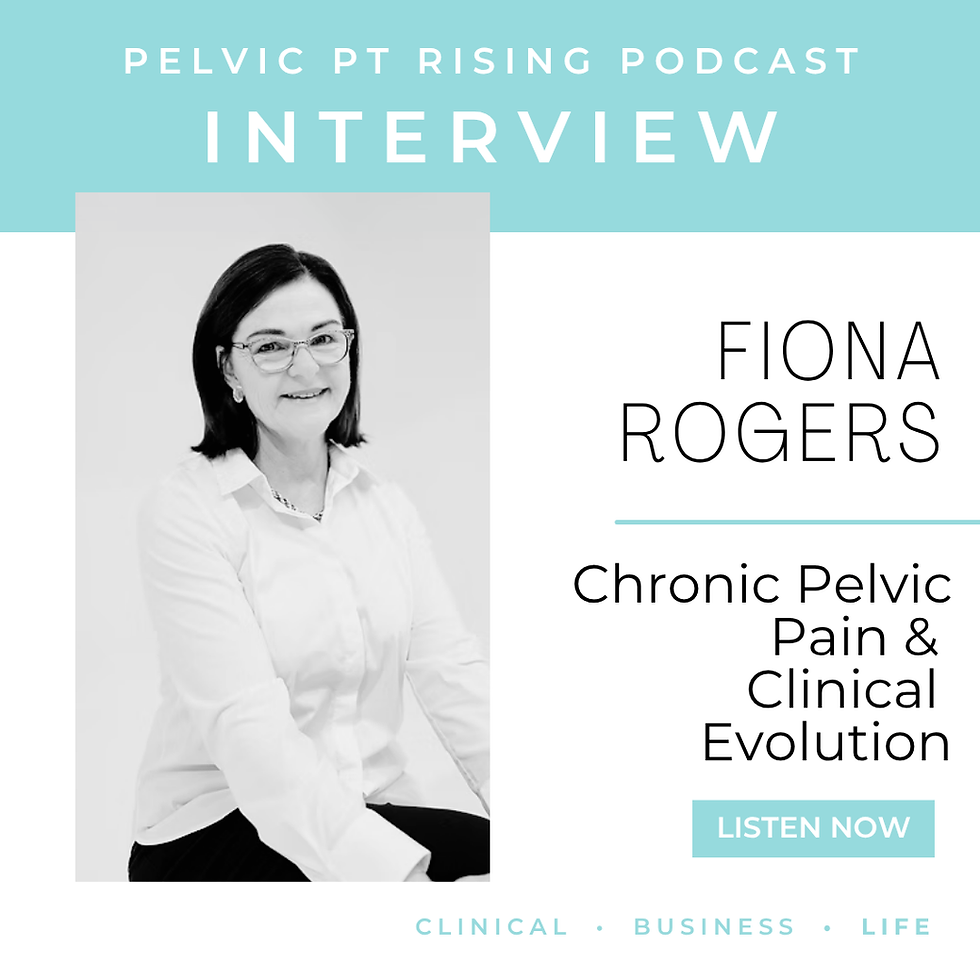The Best Position(s) for Rectal Treatment
- Nicole Cozean
.jpg/v1/fill/w_320,h_320/file.jpg)
- May 3, 2024
- 3 min read
Do you find yourself always treating in the same position when you do rectal with your patients? (Or not feeling comfortable doing rectal at all)?

Pelvic PT Rising: The pelvic health tools to make you a better clinician and/or a more successful business owner. We want every single pelvic health practitioner to be more confident and successful in your practice and career!
Clinical Courses: Game-changing online courses to make you more confident, challenge your thinking and improve patient outcomes
Business Resources: Helping 500+ pelvic health practitioners confidently start, grow and build their dream business!
It's not unusual to get stuck in a rut with how we position our patients. But I believe we can get so much more information when treating in different positions. I'll often treat in several different positions, and they often change through the course of treatment.
Sidelying - Many of us were first - and maybe only - trained in sidelying. But that position has some major limitations. In fact, I'll almost never treat in sidelying because I think the other options give us far more reliable information.
Prone - Usually my go-to early in a plan of care. It keeps the hips in extension and allows access to the low and mid back, sacrum and more.
Supine - Very helpful in also working on the perineal body, doing bridges or other ab coordination exercises during an internal exam.
Functional - This can be standing, quadruped, child's pose, or variations of these different positions to get a better idea of what the pelvic floor is doing in the most functional positions.
Broadening your positions will give you so much more information and ensure you get the most out of treatment - which position do you find yourself treating in most often?
As Nicole said on the full 'sode of the topic...
"Broadening your positions will give you so much more information and ensure you get the most out of treatment." - Nicole Cozean
Learn more about pelvic health with our Clinical Courses
All of the Rising clinical courses are designed to:
Challenge the way you think
Make you more confident in your clinical practice.
Allow you to go-at-your-own pace (all online!)
Let you go back to your work: you'll have lifetime access to the lectures and handouts. Check out all the clinical courses we offer (www.pelvicptrising.com/clinical).
Curious about private practice? Check out our Business Resources
We've now helped more than 200 cash-based pelvic health practices start and grow.
We want to make sure you're building a business that works for you (instead of vice-versa) and actually enjoy the process along the way!
See all the business resources we offer (www.pelvicptrising.com/business), tailored specifically to pelvic health!

Nicole Cozean, PT, DPT, WCS
Founder of Pelvic PT Rising and PelvicSanity Physical Therapy in Southern California.
Dedicated to forever changing pelvic health with online clinical courses to help you be more confident in your practice and business resources to help start and grow pelvic health businesses.

Jesse Cozean, MBA
Co-founder of the Pelvic PT Rising and the Rising Podcast.
Jesse uses his business experience to help pelvic health business owners start and grow their practices so they can build a practice that truly works for them. From website design, SEO, conversions, marketing, finance and money mindset, he wants to make the process of owning your own practice easier and fun.




Comments